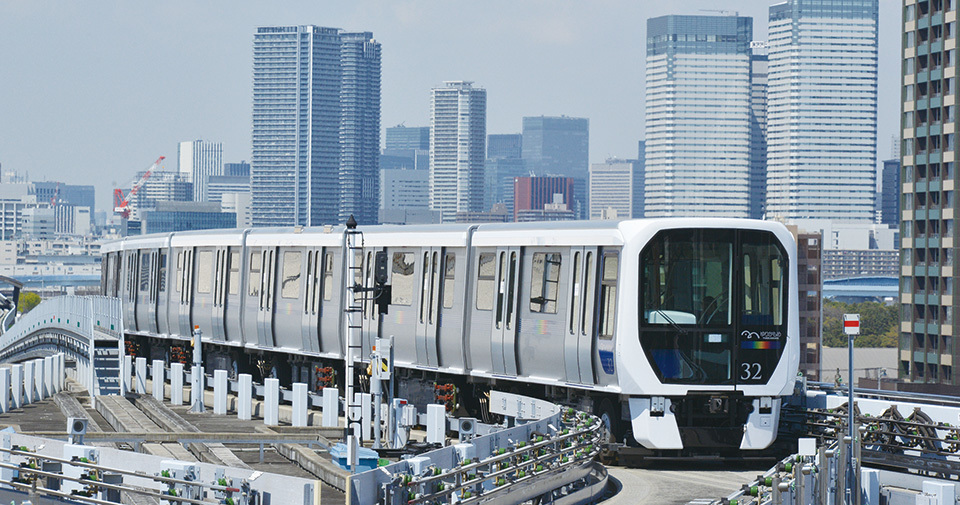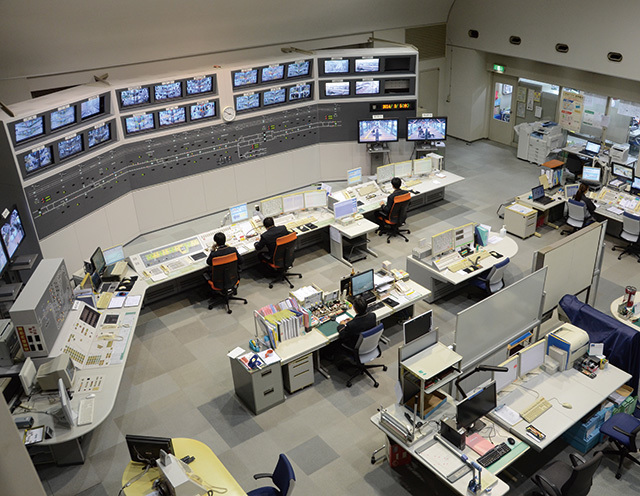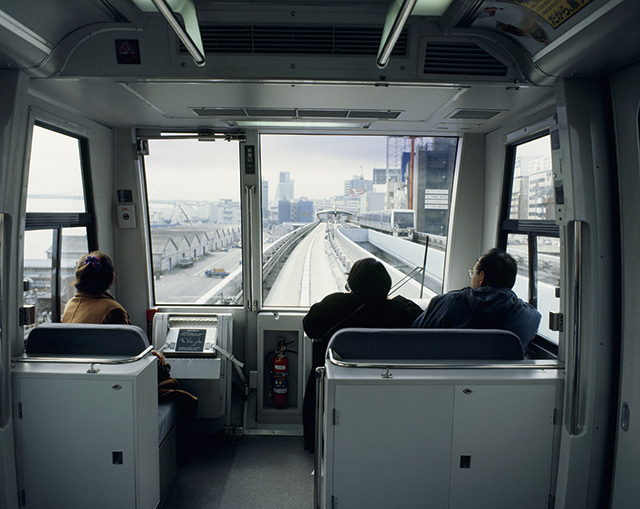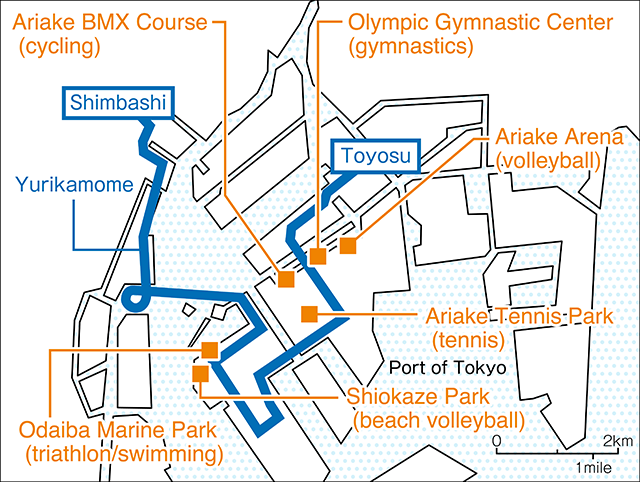New Transit Yurikamome is an automated guideway transit (AGT) system that connects central Tokyo with the Rinkai waterfront area, built on reclaimed land in Tokyo Bay. The 12-kilometer (7.5-mile) section from Shimbashi, a major train and subway station, to Ariake in the Rinkai area opened on November 1, 1995, and was extended to connect Ariake with the subway station at Toyosu in March 2006. The line now has 16 stations along its 14.7 km (9.1-mile) route.
There are two main advantages to the AGT system. The first is that operation is controlled by computer and is fully automatic. There is little chance of human error, and the level of operational precision is high. The service thus sticks very closely to the timetable, with 18 trains per hour at peak times. As the availability of drivers is not a constraint, it is possible to flexibly add extra services when many passengers are expected, such as around New Year’s, during vacation periods, or when special events are being held.
Emerging from the skyscraper-studded center of the metropolis, Yurikamome trains cross a section of Tokyo Bay via the Rainbow Bridge and sweep around the Rinkai waterfront area built on reclaimed land.
The second advantage is that the trains have rubber tires, four per carriage, and run along a concrete guideway. As AGT systems can be built on elevated routes above existing roads, there is no need to acquire a great deal of extra land, and construction costs are about a third to a half of those for a subway route. The carriages are small and light, and their tires grip well, allowing the trains to negotiate sharp curves and slopes. Thanks to this, it is possible to construct routes even in crowded urban areas.
Yurikamome’s successful introduction as an additional form of transportation within a developed metropolis has garnered major interest from overseas. As urbanization advances around the world, many countries and regions are experiencing issues such as traffic congestion and pollution caused by vehicle exhaust fumes. Members of inspection teams from other countries who have come to see the system have appraised it highly.
Of the 110,000 daily Yurikamome riders, around 60% are tourists and other occasional users, which is a high proportion compared with other public transit services. They are drawn by attractions along the route including the Tokyo Big Sight convention center, Odaiba Marine Park, museums, and shopping centers. Yurikamome will also play an important access role when the Tsukiji fish market, known as “the kitchen of Tokyo,” relocates to Toyosu in November 2016, and when the Summer Olympics and Paralympics are held in Tokyo in 2020. The Main Press Center and International Broadcasting Center for the games will be located in Ariake, and there will be six competition venues along the route. Because they are fully automated, with no drivers’ or conductors’ cabins, Yurikamome trains offer sweeping views from their elevated routes; visitors will enjoy the chance to feast their eyes on the great panorama of Tokyo as they travel.
Employees at the Central Command Office constantly monitor and control the system’s operation, making adjustments as necessary to such aspects as the timing for the opening and closing of doors.


































































































































